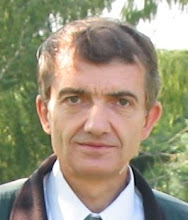Phys. Rev. Lett. 120, 013901 – Published 3 January 2018
Light Stops at Exceptional Points
-
1Schulich Faculty of Chemistry and Faculty of Physics, Technion—Israel Institute of Technology, Haifa 32000, Israel
-
2Instituto Nacional de Matemática Pura e Aplicada—IMPA, 22460-320 Rio de Janeiro, Brazil
Almost twenty years ago, light was slowed down to less than 10−7 of
its vacuum speed in a cloud of ultracold atoms of sodium. Upon a
sudden turn-off of the coupling laser, a slow light pulse can be
imprinted on cold atoms such that it can be read out and converted
into a photon again. In this process, the light is stopped by
absorbing it and storing its shape within the atomic ensemble.
Alternatively, the light can be stopped at the band edge in
photonic-crystal waveguides, where the group speed vanishes. Here, we
extend the phenomenon of stopped light to the new field of
parity-time (PT) symmetric systems. We show that zero group speed in
PT symmetric optical waveguides can be achieved if the system is
prepared at an exceptional point, where two optical modes coalesce.
This effect can be tuned for optical pulses in a wide range of
frequencies and bandwidths, as we demonstrate in a system of coupled
waveguides with gain and loss.
Phys. Rev. Lett. 118, 155301 – Published 10 April 2017
Negative-Mass Hydrodynamics in a Spin-Orbit–Coupled Bose-Einstein Condensate
M. A.
Khamehchi1, Khalid
Hossain1, M. E.
Mossman1, Yongping
Zhang2,3,*, Th.
Busch2,†, Michael
McNeil Forbes1,4,‡, and P.
Engels1,§
-
1Department of Physics and Astronomy, Washington State University, Pullman, Washington 99164, USA
-
2Quantum Systems Unit, OIST Graduate University, Onna, Okinawa 904-0495, Japan
-
3Department of Physics, Shanghai University, Shanghai 200444, China
-
4Department of Physics, University of Washington, Seattle, Washington 98105, USA
A
negative effective mass can be realized in quantum systems by
engineering the dispersion relation. A powerful method is provided by
spin-orbit coupling, which is currently at the center of intense
research efforts. Here we measure an expanding spin-orbit coupled
Bose-Einstein condensate whose dispersion features a region of
negative effective mass. We observe a range of dynamical phenomena,
including the breaking of parity and of Galilean covariance,
dynamical instabilities, and self-trapping. The experimental findings
are reproduced by a single-band Gross-Pitaevskii simulation,
demonstrating that the emerging features—shock waves, soliton
trains, self-trapping, etc.—originate from a modified dispersion.
Our work also sheds new light on related phenomena in optical
lattices, where the underlying periodic structure often complicates
their interpretation.
